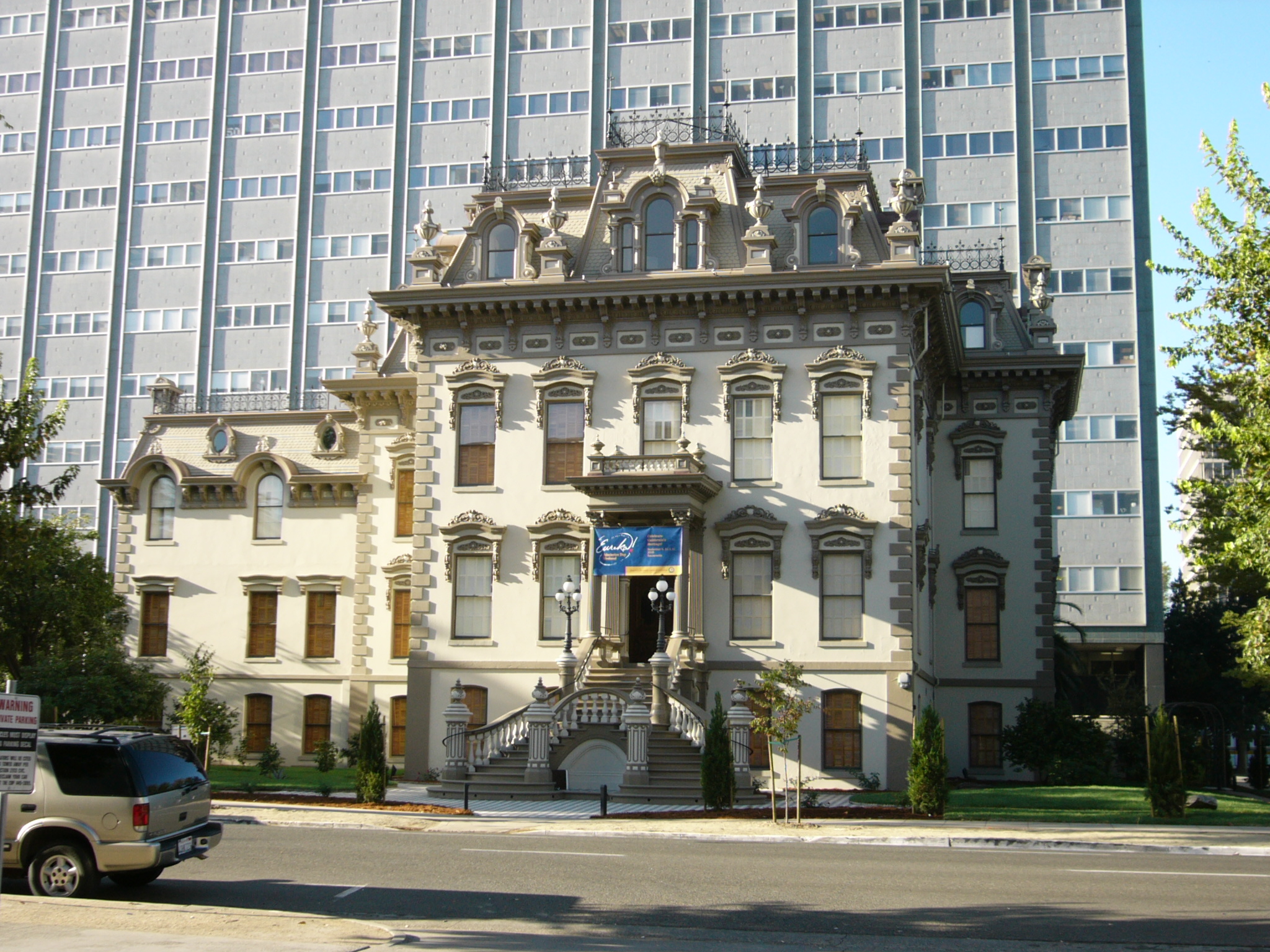- Leland Stanford Mansion State Historic Park
Infobox_nrhp2 | name =Stanford-Lathrop House
nhl=yes

caption = Stanford-Lathrop House
location=Sacramento, California
lat_degrees = 38
lat_minutes = 34
lat_seconds = 35
lat_direction = N
long_degrees = 121
long_minutes = 29
long_seconds = 50
long_direction = W
locmapin = California
area =
built =1857
architect=Seth Babson [http://www.nr.nps.gov/Red%20Books/71000178.red.pdf NPS Redbook] ]
architecture= Second Empire
added =December 09 ,1971
designated_nhl =May 28 ,1987 [http://tps.cr.nps.gov/nhl/detail.cfm?ResourceID=1081&resourceType=Building NHL Summary] ]
governing_body = State
refnum=71000178cite web|url=http://www.nr.nps.gov/|title=National Register Information System|date=2008-04-15|work=National Register of Historic Places|publisher=National Park Service]Leland Stanford Mansion State Historic Park is a state and federally protected area in Sacramento,
California . It features the "Leland Stanford House", amansion once owned byLeland Stanford ,Governor of California from 1862 to 1863,U.S. Senator from 1885 to 1893, railroadtycoon , member ofthe Big Four and founder ofStanford University . The house was designated aNational Historic Landmark in 1987.History
The original owner and builder of the home was Sacramento merchant Shelton C. Fogus, a wealthy Sacramento building merchant, while the
Renaissance Revival architecture of the original home is attributed to Seth Babson.Leland Stanford , a rising member of the Republican Party and president of theCentral Pacific Railroad , purchased the home for $8,000 in June 1861, shortly before his election to the governorship in the general elections that year. During his two-year governorship, the Stanford Mansion served as the state's executive office and living quarters. Proceeding governorsFrederick Low andHenry Huntly Haight would also make the mansion their office.Between 1871 to 1872, the Stanford family embarked on an ambitious remodel of the residence. The home was raised twelve feet in response to frequent flooding from the
Sacramento River , as Stanford had attended his gubernatorial inauguration by rowboat in 1862. In addition, one-story was added to the bottom and top of the mansion each. The home was also expanded from 4,000square feet to 19,000, and redesigned to reflect the FrenchSecond Empire architecture popular of the period, particularly in the 4th floorMansard roof that caps the home. The result was a four-story remodeled architectural sandwich in which the original 2-story house sat between the added floors.Following Stanford's death in 1893, his widow
Jane Stanford continued to oversee the home. In 1900, Stanford donated the home to theRoman Catholic Diocese of Sacramento to be used for the children of California. It was given to theSisters of Mercy who ran it as anorphanage named the Stanford and Lathrop Memorial Home for Friendless Children.In the 1932, the home was handed over the
Sisters of Social Service who eventually transformed the mansion from an orphanage to a residence for dependent high school girls. A fire in the mansion in 1940 brought considerable damage to the fourth floor. During the same decade, the mansion was designated a State Historical Landmark in 1957.In 1978, the
government of California acquired the property for use as a state park. The Sisters of Social Services would remain on the grounds until 1987, whenCalifornia State Parks designated the mansion and the immediate surrounding land as a state historic park. Following the state's decision, theNational Park Service designated the mansion as aNational Historic Landmark onMay 28 ,1987 . It was not until September of 2005 that the mansion would finally be open to public tours, after 20 million dollars worth of renovation and rehabilitation.Restoration
Beginning in 1991, with the help Sacramento businessman and former
Stanford University professor Peter McCuen, the Stanford Mansion underwent a 14-year renovation at the cost $22 million dollars. Accurate restoration of the home and its rooms was aided by both an extensive study of the home in 1986 through theHistoric American Buildings Survey , and through a large collection of photographs of the home taken in 1868 byAlfred A. Hart , and again in 1872 byEadweard Muybridge .The repairs and restoration were completed in 2005, where the mansion again opened to the public. California State Parks offers guided tours through the fully refurbished home. Visitors today, as then, must climb a full story to enter the home's original ground floor. Most rooms of the house have been restored to their 1872 appearance.The park on the corner of 8th Street and N Street in downtown
Sacramento, California , just two blocks away from the Capitol building. Prior to the reopening of the Stanford Mansion, California did not have a location for the hosting of official functions for nearly 40 years. Today the mansion is frequently used by thegovernment of California to host foreign dignitaries. TheGovernor of California also retains an office in the mansion. Tours of the mansion are offered daily, but can be impacted by official functions on behalf of the Governor's Office or theCalifornia State Legislature leadership.References
External links
* [http://www.stanfordmansion.org/ Leland Stanford Mansion Foundation official site]
* [http://www.parks.ca.gov/default.asp?page_id=489 Leland Stanford State Historical Park offical site]
* [http://memory.loc.gov/cgi-bin/query/r?ammem/hh:@field(NUMBER+@band(CA0544)) Library of Congress, America's Memory]
Wikimedia Foundation. 2010.
